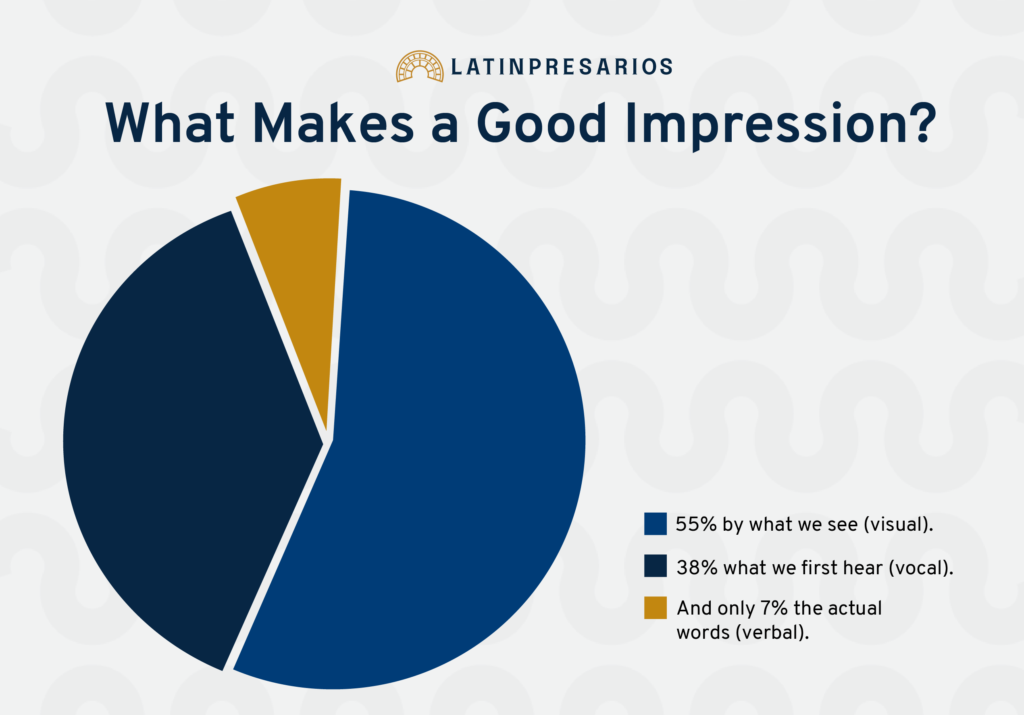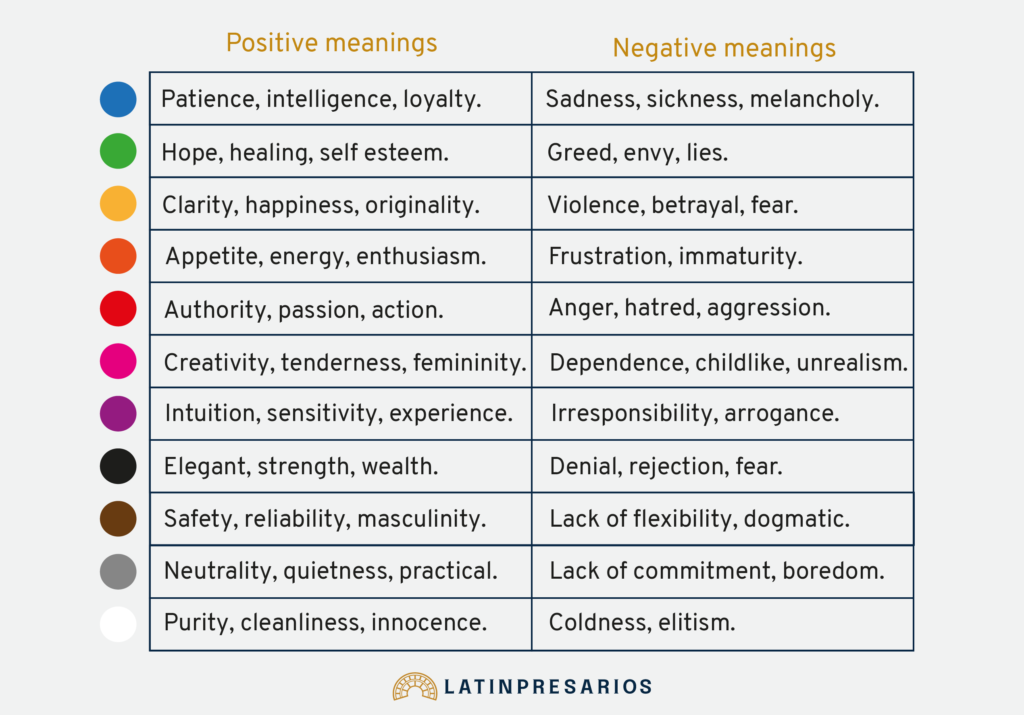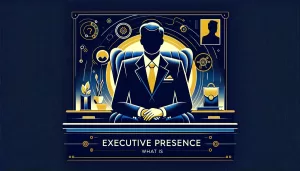When the moment comes to make your personal brand presentation, we encourage you to take care of the first impression you cause and the following aspects:
- Visual.
- Verbal.
- Vocal.
- Personal Brand Statement.
Each of these elements will be an essential piece of the puzzle of the ideal personal brand presentation.
Since a personal brand it’s the set of thoughts, feelings and opinions people have about you, a personal brand presentation may feel like a weird concept.
However, it isn’t.
In this article, we will talk about a personal brand presentation as any kind of speech you give in front of an audience and in which your personal brand it’s directly involved.
As a thought leader in your industry, you eventually will be doing lots of presentations in different places and about different topics.
Mastering the art of a personal brand presentation will allow you to be more confident, generate trust in people and communicate better your ideas.
This way, your goals will be closer to you and you will have stronger tools to develop your skills.
Keep reading to learn the important aspects to train for your personal brand presentation.
Contents
The Importance of First Impressions
Did you know that according to research you only have about 27 seconds to make a first impression?
This means that, when meeting new people, you only have 27 seconds to make them trust you and like you before you actually present your ideas.
First impressions are defined by the American Psychology Association as “one’s initial perception of another person, typically involving a positive or negative evaluation as well as a sense of physical and psychological characteristics”.
They also explained that the information other people receive about you when they get their first impression has more weight in their mind, and therefore tends to last longer.
This means that making a good impression will be a great impulse to reach your goals, and not succeeding can be an revelant impediment.
Of course, first impressions can be influenced by factors out of your control, such as your physical image, how attractive your public sees you, what emotional state they are in, etc.
Nonetheless, we must focus on the aspects we do have control over and can be used in our favor.
How to Make a Good First Impression
We have gathered a few tips on how to make better first impressions. Don’t worry—we will go further into detail.
- Make sure you smell good. Research shows that 85% of people will have a better impression of a person if they smell good.
- Dress according to the event. Follow dress codes and check if the ideas you will be expressing in your personal brand presentation go on the same line as how you’re dressed.
- Keep a good attitude. People like someone who seems friendly and willing to help and/or explain anything that’s necessary.
Keep reading to learn more in-depth how to build an excellent personal brand presentation.
Important Elements When Making a Personal Brand Presentation
Regardless of your industry and the activities you dedicate to, making a personal brand presentation will have general elements you must take care of.
If you master your visual, verbal and vocal aspects of your presentation, you will certainly succeed in your goals to communicate your ideas and proposals!
When reading, keep in mind that experts say that first impressions are formed the following way:
- 55% by what we see (visual).
- 38% what we first hear (vocal).
- And only 7% the actual words (verbal).

This doesn’t mean that you should neglect the content of your presentation! Remember that once the first impression is formed, what you say will become the focus.
Visual
The visual aspect of your presentation it’s made of how you look, your body language, facial expressions and visual support (if that’s the case).
Taking care of all the visual elements of your presentation is essential to achieve a good impression in your public.
Humans find peace and trust in places, people and situations that are appealing to the eye, so it’s important to make the best out of it.
How You Look
How you look involves your physical appearance, from the elements you can’t control (your face and body shape and features), to the one you can change (how you fix your hair, the way your dress, etc).
If you want to generate trust in people, it’s important you look professional and put together.
For example, if you have facial hair you should shave or make sure it’s clean and brushed.
If you use makeup, make a look that goes according to the situation.
It’s also important you pay attention to the dress code and follow it. Your clothes must be clean and ironed.
If you want to go the extra mile—and we recommend you to do so—, you could even dress thinking about color psychology.
By using this strategy, you could help yourself to make the same impression in different publics.
For example, blue is the color of loyalty, stability and truth, while orange transmits energy, enthusiasm and warmth.
We could say blue might be adequate if you’re going to talk about insurances, while it would be better to wear orange if you’re presenting a workshop about motivation and lifestyle.

By taking into account these tips, you will be able to present yourself in an unforgettable way to your audience and make a remarkable personal brand presentation.
Body Language
Body language “involves a host of nonverbal cues or signs such as body movements, facial expressions, tone of voice and gestures in communication.”
It is very important in our speech because it strengthens our discourse and gives additional information to our audience.
If we know how to use it and dominate it, we can achieve better results. If we don’t, our own body language can end up betraying us.
Body language involves facial expressions, but also refers to the rest of our bodies.
Here are some of the most common examples and what they express:
- Head tilted to the side: the person is listening to what others are telling them.
- Leaning in: it means that you trust, like, or are actively listening to the person you’re getting closer to.
- Direct eye contact: expresses confidence and trust.
- Arms and/or legs crossed: the person is defensive or in disagreement with what is being said.
- Locked ankles: nervousness or apprehension.
- Touching your nose: rejection to the discussed ideas or being untruthful.
Visual Support
When we say “visual support” we refer to the additional resources you might use in your personal brand presentation.
This will usually be a digital or PowerPoint presentation, but depending on the topic it can also be a prototype, brochures, samples, etc.
We understand that visual support might not always be necessary—but it always is a great addition.
You can also get inspiration in our color psychology table.
Taking care of the visual aspects of your personal brand presentation will guarantee a good first impression and help you get people interested in what you are saying.
Verbal
The verbal element it’s about what you actually say.
This is probably the aspect that varies the most, since it will change depending on the specific topic of the presentation and your public.
However, there are general aspects you must take care of, such as the vocabulary you use.
There are opportunities in which you will have to be more professional and formal than others. Depending on your audience, your presentation’s goals and more, you will know.
We strongly advise you to make a script beforehand with all the topics you must touch on during your speech and practice it.
Other tips we have for you are:
- Avoid using many fillers: such as “uhm”, “eh”, etc. It’s better to remain silent for a few seconds and then continue.
- Be confident: no one in the room knows more than you about your topic.
- Think before you speak: don’t worry that much about time. If the information you’re providing is valuable, it will all be worth it for your public.
Remember that in practice lies your future success!
Vocal
Your vocal aspect it’s about the way you say the information of your presentation.
This could also be defined as “oratory”, because it involves your vocal range, your modulation, pronunciation, etc.
The best way to improve your vocal expression is to practice, not only when you have a presentation due, but at every chance you get.
The aspects you must consider are the following:
- Tone: “the way a person is speaking to someone”. Your tone will influence if a person will feel intimidated or attracted towards you.
- Volume: depending on the space you’re talking in, the technological resources you have and the number of people, the volume of your voice might need to be higher or lower.
- Breathing: by controlling your breaths, you will sound calmed, confident and professional.
- Cadence and rhythm: by variating it, you will be able to maintain your audience engaged with your discourse.
Taking advantage of your vocal skills it’s a matter of mastery and practice, since you might find unexpected situations in which you will have to improvise a little—and still sound professional while doing it.
Personal Brand Statement
A personal brand statement is a phrase that summarizes and communicates what you do and how you can help people.
When made the right way, a personal brand statement will help you engage with people and make them interested in what you have to say or to offer.
Saying your personal brand statement can be a great way to start your presentation, depending on its topic of course, or introducing yourself.
It gives you an opportunity to show how professional and clear-minded you are when it comes to your goals.
We wrote a free guide on how to write your own personal brand statement, since we believe that it is a key element in any personal branding strategy.
Learn How To Make A Successful Personal Brand Presentation
In fewer words, the way to make a personal brand presentation that your audience will remember is to:
- Make a good first impression.
- Take care of your visual appearance.
- Practice your verbal discourse.
- Master your vocal expression.
- Build a personal brand statement.
By making a good personal brand presentation, you will be able to leave a mark in people’s minds and increase your offline awareness.
It will also improve your confidence and make you a better professional long-term.
Making presentations is a great way to get to know your personal brand, which is definitely part of a marketing process.
If you are eager to know more about how to become the thought leader in your industry, apply for a free call with us right here.
Don’t be afraid to take the mask off and tell your story!





